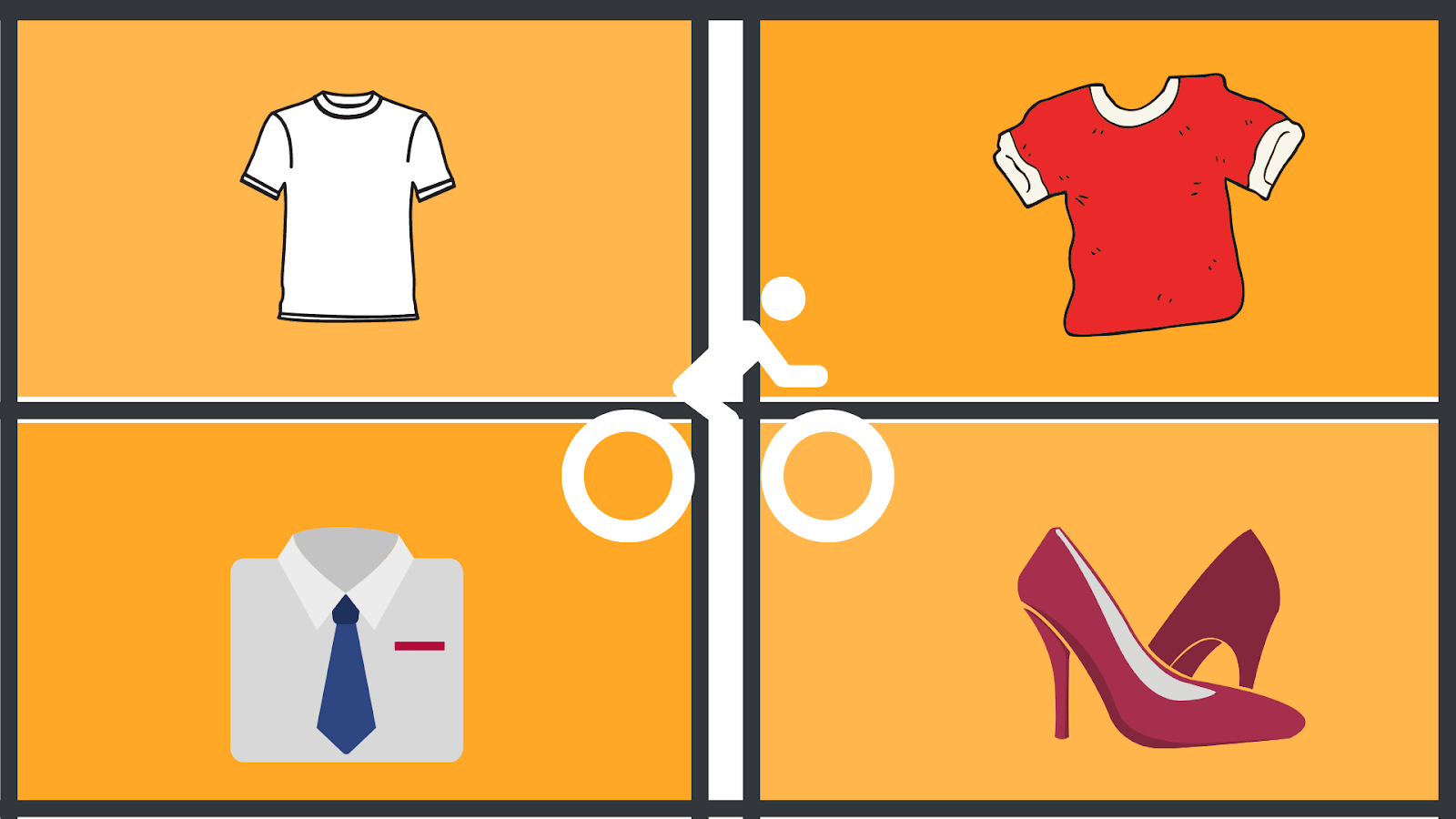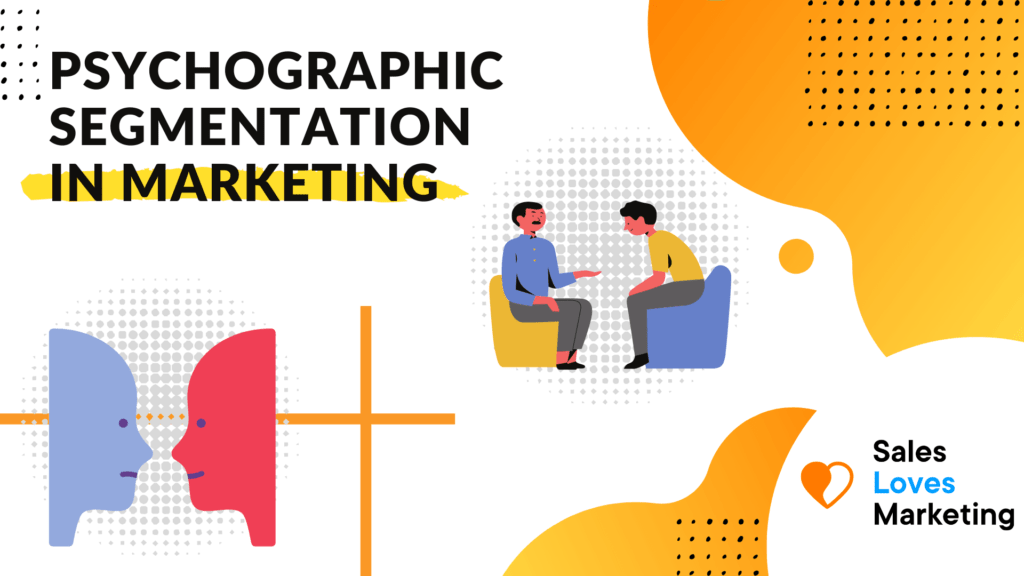Psychographic segmentation is a marketing strategy which divides consumers into different group types based on different psychological characteristics with the intent of finding out more information about the consumer.
In this article we will discuss all the important internal components of psychographic segmentation, it’s utility in marketing and how you can use it in order to better understand the purchasing decisions of consumers.
What is Psychographic Segmentation?
This can be an extremely difficult question to answer because it’s so vague.
The answer to this question is much more obvious.
Because they simply need to w*** t*** a**.
You can easily determine that the need for this product is a basic necessity.
Psychographic segmentation is the process of building groups of customers who exhibit similar characteristics in order to help marketers formulate what motivates their purchasing decisions.
It is meant to help predict consumer behavior by diving into the psychological characteristics, beliefs, motivations and priorities of consumers which drives their behaviors. Psychographic segmentation is meant to aid companies in finding out more about the psychological motivations which trigger consumers to buy.
This takes time, effort and lots of data in order to understand your customers. There is a plethora of different types of psychographics which helps marketers understand their consumers.
Psychographic Segmentation Types

Each of the different segmentation types can carry different weight on the purchasing decisions of consumers and it’s hard to know exactly which component carries more responsibility for consumer decisions.
Psychographic segmentation is multivariate and that’s why it’s useful to create different types and groups in order to further understand consumer psychology.
Some of the different segmentation types include:
- Personality
- Social Class
- Lifestyle
- Interests
- Values
- Religion
- Personal opinions
- Attitudes
- Hobbies
- Temperament
Once you successfully break down consumers into their appropriate groups you will have a better understanding of the motivations behind their purchasing decisions. When you have successfully gone through the psychographic segmentation process you will be able to:
- Understand the reason behind consumers purchasing decisions
- The pain points that your product or service provides them
- Understand how your customers see and feel about your products and services
- Understand their purchasing habits and tendencies
Let’s take a brief look at the different segmentation types and some of their unique traits and qualities.
Personality Segmentation

The personality segmentation type can be quite a tricky one to identify and break down. This is because every consumer is unique in their own way, but you can still find common personality traits and tendencies which can group consumers together. Some common personality traits which consumers share include:
- Agreeableness
- Compassion
- Loyalty
- Conscientiousness
- Openness
- Observant
- Optimistic
- Impulsive
- Introverted/Extroverted
Personality segmentation types are an important way to get to know the temperamental and behavioural aspects of your customers. They can provide insight into their shopping patterns and how quickly they purchase items.
Social Class Segmentation

Social class segmentation is about the place which people occupy in their community or the place they think they are occupying. This has a direct impact on their purchasing behavior and tends to be very straightforward.
This can include:
- Middle Class
- Upper Class
- New Money/ Old Money
- Lower Class
These are important to narrow down and quite often are pretty easy to spot. They will be able to identify the purchasing power of your consumers and the type of brands they tend to go for.
Recommended Reading: Sales and Marketing Techniques to Help Improve Conversions
LifeStyle Segmentation

The lifestyle of your customers plays a significant role in whether or not they will consider buying your products or using your services.
For example, the type of clothes they wear is determined by their lifestyle choices. If they work in a formal business setting they will tend to wear suits, dress up skirts, ties, etc.
If they are a high school student they will wear different types of shoes, pants, t-shirts and accessories. This is a result of their current lifestyle and where they are in their current stage of life.
Another important factor to consider that plays into the lifestyle segmentation type is the age of your consumer. The age you plan to target is very important to know because it will determine if they are a right fit for your product or service.
Interest Segmentation

Interest is an important segmentation type because it shows the level of degree to which your customers have a personal connection with.
How interested are the consumers in the type of products or services you are offering. Do they use them daily, weekly, monthly or very rarely?
Narrowing down a consumer’s interest level is important because it will determine how likely they are to engage with your products and service in the future. The different interest segmentation types include:
- Health
- Food
- Family
- Career
- Hobbies
- Community
These are the baseline levels of interest that people have and they can break down even further once you start exploring within them. They provide a high degree of insight into what matters to consumers internally and can function as a great source of finding out what kind of clubs, organization or hobbies they belong to.
Intent Driven Content: Marketing Strategy To Boost Your Brand and Sales
Personal Opinions, Attitudes, Hobbies Segmentation

This segmentation type features things that the customer has a personal connection and inclination towards. They are typically molded through their environment and the kind of products and services they have been exposed to.
There are people who love action movies and some who prefer comedies. There are people who like McDonalds over Burger King. It’s a matter of what they have experienced in life and the kind of things they have had available to them.
These will vary greatly between states and countries and even different social classes. Grouping these kinds of segmentation type can be challenging and even political at times, but consumers who have strong opinions and personal preferences tend to be the most loyal customers.
Psychographic Segmentation Advantages
At this point it should be quite obvious that psychographic segmentation has quite a few different advantages.
Let’s take a look at some of them.
- Allows for more targeted marketing – By creating accurate psychographic segments of your consumers you gain a better idea of what is relevant to them and as a result you can tailor your marketing to be more effective.
- Gives insight into consumers purchasing patterns- Psychographic segmentation puts you at an advantage because the more data you collect about the frequency of your consumers purchase the better you can predict their buying patterns. This is extremely valuable for marketers.
- Shows buyers purchasing motivation – It’s difficult to exactly pin-point why people purchase things. Interest segmentation can help us determine whether someone’s buying motivation is due to internal factors or external factors.
- Creates a more dynamic view of the different types of consumers – The basis of psychographic segmentation lies in the ability to create different groups of buyers. By knowing the different types of consumers in the marketplace you allow yourself to create a more laser focused target market in order to sell more effectively.
In order to experience the full advantages and benefits of psychographic segmentation it’s important to thoroughly review your buyers from the top down and allocate them to their own specific groups.
Once you have an accurate base of different consumer groups you can learn more about them and your business. Psychographic segmentation can be incredibly useful in helping your business learn more about its customers, their purchasing patterns and behaviors and the reasons behind why they buy. It can be an incredibly powerful way to improve your marketing to resonate better with your customers.
